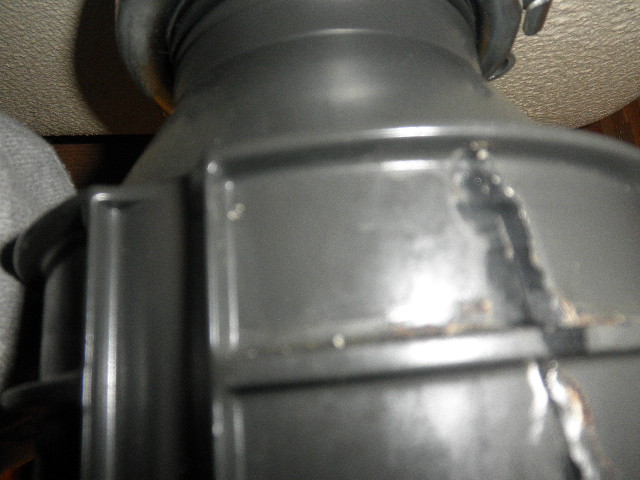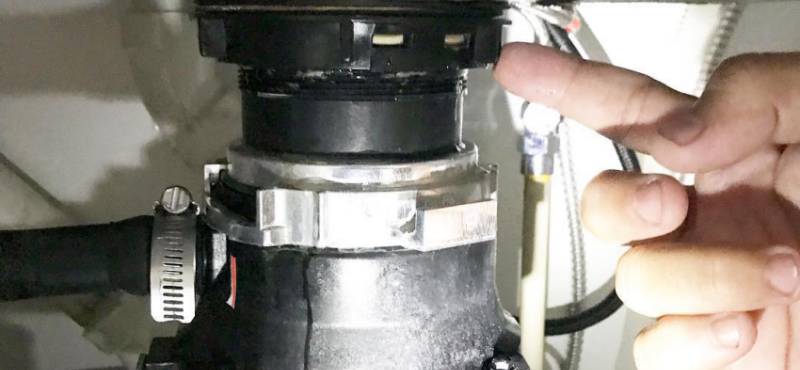Simple Instructions for Repairing a Leaky Waste Disposal
Simple Instructions for Repairing a Leaky Waste Disposal
Blog Article
We've noticed this article relating to How to fix a pretty consistent leak from my garbage disposal down the page on the internet and accepted it made sense to talk about it with you on this page.

Waste disposal unit are essential kitchen area home appliances that assist in taking care of food waste successfully. Nevertheless, a leaking garbage disposal can be a discouraging and untidy trouble to handle. Luckily, lots of leakages can be fixed easily with a few easy steps. In this article, we will go over how to take care of a leaking garbage disposal properly.
Introduction
Garbage disposals are mounted under cooking area sinks and are developed to shred food waste into smaller items, permitting it to pass through the pipes system quickly. While these devices are generally trustworthy, leaks can happen with time because of damage, loose connections, or damage to the system.
Step-by-Step Overview to Fixing a Leaking Waste Disposal Unit
Shut off the Power
Before trying any type of repair services, ensure that the power to the waste disposal unit unit is turned off to stop the threat of electric shock.
Locate the Leakage
Determine the specific location of the leak and identify the reason
Tighten up Connections
Make use of a wrench to tighten any loosened links in between the disposal unit and the plumbing system.
Change Seals or Gaskets
If the leak results from used seals or gaskets, get rid of the old elements and replace them with brand-new ones.
Patching Splits or Holes
For splits or openings in the disposal system, usage epoxy or a suitable patching material to secure the damaged location.
Recognizing the Resource of the Leakage
Before trying to take care of a leaking garbage disposal, it is essential to determine the resource of the leakage. This can normally be done with visual examination or by conducting basic tests.
Visual Evaluation
Inspect the waste disposal unit unit very carefully for any type of indicators of water leakage. Pay attention to locations around seals, gaskets, and link points.
Examining for Leakages
One method to check for leakages is by running water through the disposal unit and checking for any kind of noticeable indicators of leak.
Usual Root Causes Of Leakages in Garbage Disposals
Worn Seals and Gaskets
Seals and gaskets play a crucial role in protecting against water from leaking out of the waste disposal unit. Over time, these elements can degrade, causing leakages around the disposal device.
Loose Links
The connections between the garbage disposal and the pipes system can become loosened gradually, creating water to leakage out throughout procedure.
Fractures or Holes in the Disposal Device
Physical damage to the waste disposal unit, such as fractures or openings in the housing, can additionally lead to leakages.
Devices and Materials Needed for Dealing With a Dripping Garbage Disposal
Before starting the fixing procedure, gather the essential devices and materials, including a screwdriver, adjustable wrench, plumbing technician's putty, replacement seals or gaskets, and epoxy or patching product for fixing splits or holes.
Testing the Waste Disposal Unit After Repair Service
Once the fixing is total, test the waste disposal unit by running water through it to make certain that the leak has been settled.
Preventive Maintenance Tips to Prevent Future Leakages
To avoid future leakages, it is essential to perform regular maintenance on your garbage disposal. This includes maintaining it clean, preventing putting non-food things or hard things down the disposal, and regularly looking for leaks or other concerns.
Final thought
In conclusion, dealing with a leaking waste disposal unit is a relatively simple process that can be completed with standard tools and materials. By adhering to the steps detailed in this write-up and practicing preventive maintenance, you can keep your waste disposal unit in good working problem and avoid expensive repair services in the future.
HERE’S HOW TO FIX YOUR GARBAGE DISPOSAL
WHAT TO DO IF SOMETHING IS STUCK IN YOUR GARBAGE DISPOSAL
If the impeller won’t turn, there’s probably something stuck in the disposal. It could be a steak bone or peach pit, although plumbers report pulling all sorts of inappropriate objects out of disposals, such as bottle caps or aluminum foil. Make sure power to the disposal is off, and look inside to see if you can see the source of the jam.
Never stick your fingers in a disposal. Pull out anything you see with tongs or pliers.
If the disposal still won’t work, it may be time to call a plumber or consider buying a new disposal. GEM Plumbing & Heating is here for all of your garbage disposal needs.
WHAT TO DO IF YOUR GARBAGE DISPOSAL DRAIN IS CLOGGED
Take everything out from underneath your sink and put a bucket or other container under your disposal to catch any water that drains out. Disconnect your disposal from the power supply. If it’s plugged into a wall outlet, unplug it. If it’s hardwired into an electrical box, go to the electrical panel and turn off the breaker for the disposal. Pour ¼ cup of baking soda into the drain, followed by ½ cup of white vinegar. Give the solution a few minutes to fizz and do its work. Look into the disposal with a flashlight to see if you can see an object that might be causing the clog. If you see it, remove it using tongs or pliers. MORE TIPS ON DEALING WITH A CLOGGED GARBAGE DISPOSAL
Never use drain cleaner in a garbage disposal. It can damage the plastic parts inside the disposal. You can also be splashed with the caustic liquid while working to clear the clog. Beware! Never stick your fingers into a garbage disposal. Trust us — not a good idea. In many instances, your dishwasher drains through your garbage disposal. This allows the disposal to grind any large food particles that may be drained out of your dishwasher. There are some jurisdictions, however, where the plumbing code prohibits such a connection. WHAT TO DO WHEN YOUR DISHWASHER DRAINS THROUGH THE DISPOSAL
Run some water in the sink so your plunger has at least a ½-inch of water to create a seal and plunge vigorously up and down several times. You may need to repeat this several times. Run hot water down the drain to clear any residue that remains.

I hope you liked our post on The Handy Guide To Fixing Your Garbage Disposal Leaking. Thanks a ton for spending some time to read through our posting. Those who enjoyed reading our blog entry if you please make sure you remember to share it. Thanks for your time. Visit us again soon.
Click Here Report this page